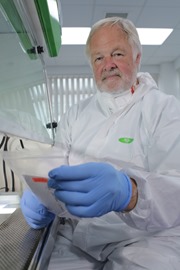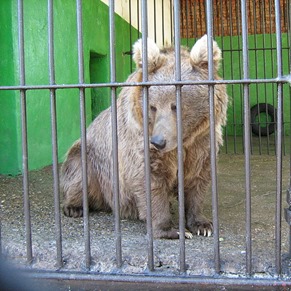Remember the Sykes study? You know the one that was being billed as going to be the one that defines Sasquatch, Yeti, Bigfoot?
Geneticist Bryan Sykes
The study that dashed our hopes claiming that the Yeti was actually the reemergence of a fossil polar bear?
Well silently and off the BIG radar, some things about the Sykes have been revealed and they are not minor.
The Fossil Polar Bear
The crux of the study, at least in the Himalayas, was that the DNA collected on some of the samples belonged to a long thought extinct Polar Bear. A cryptozoological breakthrough if not necessarily the one anticipated.
List of samples tested by Sykes and results. (Credit: Royal Society Publishing)
But as always; hold the phone. It appears an error was made.
In a letter to the Royal Society Publishing Organization, Sykes admitted to a mistake by stating their GenBank search was in error, but now alluding that their discvovery was to the modern polar bear.
“Sykes and Melton acknowledged that their GenBank search was in error and but suggested that the hairs were instead a match to a modern polar bear specimen "from the Diomede Islands in the Bering Sea reported in the same paper”. They maintained that they did not see any sign of damage in their sequences and commented that they had “no reason to doubt the accuracy of these two sequences any more than the other 28 presented in the paper.”
Published Dec. 17th, 2014 – http://rspb.royalsocietypublishing.org/content/282/1800/20142434
However while retesting the samples for replication done by Eliécer E. Gutiérrez, a researcher at the Smithsonian Institution and Ronald H. Pine, affiliated at the University of Kansas stated that the samples were genetic variants of brown bear near impossible to derive the difference between them.
“By means of mitochondrial 12S rRNA sequencing of putative “yeti”, “bigfoot”, and other “anomalous primate” hair samples, a recent study concluded that two samples, presented as from the Himalayas, do not belong to an “anomalous primate”, but to an unknown, anomalous type of ursid. That is, that they match 12S rRNA sequences of a fossil Polar Bear (Ursus maritimus), but neither of modern Polar Bears, nor of Brown Bears (Ursus arctos), the closest relative of Polar Bears, and one that occurs today in the Himalayas… We have concluded that there is no reason to believe that the two samples came from anything other than Brown Bears.”
Published March 16th, 2015 –
http://zookeys.pensoft.net/articles.php?id=4885%20
Himalayan Brown Bear (Source: Wikipedia)
Meaning there was really no breakthrough in Yeti research.
From Bad to Worse
Even more recent was an allegation made by colleagues of Dr. Sykes as reported in the U.K. Sunday Times by Science Editor Jonathan Leake.
“A GENETICIST at Oxford University whose new book claims to offer ‘the first scientific evidence on the survival’ of apemen such as the yeti and Bigfoot, has been attacked by colleagues who say the claims are nonsense and his research institute does not exist.”
March 29th, 2015 –
http://www.thesundaytimes.co.uk/sto/news/uk_news/Science/article1537430.ece
According to an article on Retraction Watch entitled, “Bigfoot paper corrected because it doesn’t exist — the author’s institution, that is” quoted Leake stating Sykes admitted to his “white lie.”
"The paper gave Skyke’s affiliation as the Institute of Human Genetics at Wolfson College, Oxford. Sykes is a fellow of Wolfson but he admitted the institute was mythical. “The journal required some sort of additional address in the college and, hey presto, I became an institute!”
Source:
If this is true, with the above information what type of credibility does it lead to this study?
While people would consider Sykes “controversial,” every scientist out to put forth hypotheses into areas such as Cryptozoology, Ufology and Para-Anthropology, unless you’re towing the company (main-stream science) line, has been labeled as controversial. And in all science missteps are made such as the GenBank error.
However what I cannot condone, nor should anyone, is the acceptance of any untruth of any sort, any “white lie” or any misrepresentation to get published in a journal.
Has a familiar overtone doesn’t it?
Till next time,
Squatch-D








